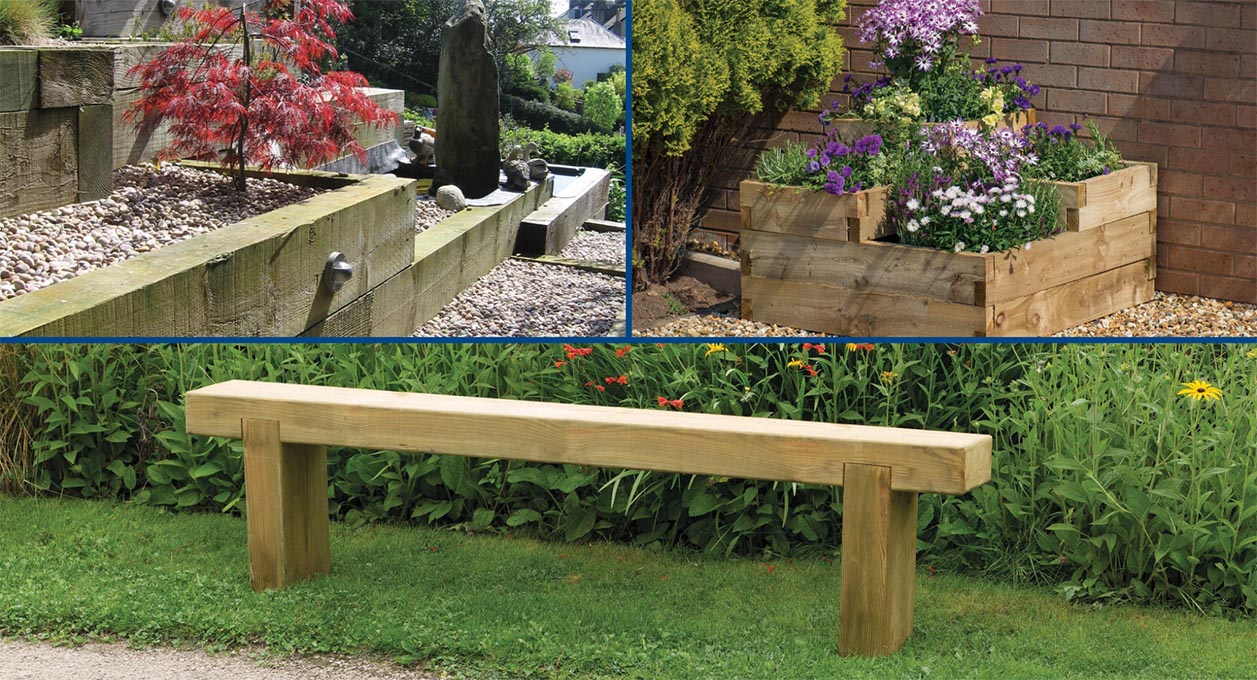Initially designed to support railway tracks, wooden sleepers have become an increasingly popular landscaping trend thanks to their durability and industrial aesthetic. In fact, searches for ‘garden sleeper ideas’ have increased on Pinterest by 40% in the last 12 months.
And it seems many are looking to DIY it. Search data reveals homeowners are turning to Google for advice on things such as ‘how to lay sleepers’ which is up 60% in the last year. For anybody looking to take on a DIY sleeper project themselves, Chris Moorhouse, Timber and Gardening Category Director at Wickes, has five tips for working with garden sleepers:
“Wooden sleepers were originally used to lay railway tracks but are now a popular landscaping material. From retaining walls to raised flower beds and from garden paths to chunky outdoor furniture, their durability and affordability make them perfect for garden projects.
“But they can be challenging to work with. Plus, they need to be laid properly, and treated periodically to maintain condition. These tips will help with choosing and working with materials, and making sure your project stands the test of time.”
Consider a flat-pack kit
“If your DIY skills aren’t great, there’s no shame in going for a raised garden bed kit instead. There’s a massive range these days. Some come flat-packed and with pre-drilled timber and full instructions which make them easy to assemble. But they still create a talking point for your garden.”
Choose the wood wisely
“There’s always a trade-off when it comes to choosing between railway sleepers. Hardwood sleepers such as oak are more hard-wearing, lasting up to 150 years with proper care. However, they are also more expensive and heavier, making them harder to work with.
“More budget-friendly softwood sleepers, like spruce, are more prone to decay but should last for 15 years if the wood is regularly treated. They’re also more lightweight, making them much easier to lift and cut. You should be able to cut through softwood sleepers with a universal handsaw, but a circular saw power tool is recommended for hardwood varieties.”
Work in situ
“Railway sleepers can be incredibly heavy and could cause substantial injury. Jumbo sleepers weigh as much as 60kg each so to protect your back, it’s best to work with them in situ, on the ground.”
Consider a membrane
“Covering the sides of your sleepers that will be in contact with the earth with a waterproof membrane or bitumen paint can be a good idea. This will keep moisture away from the wood and will prevent rotting, extending the lifespan of your sleepers by up to 20 years.”
Treat the timber
“Applying an exterior woodwork paint will protect your timber, extending the life of your garden project. Consider the lasting power of each treatment, as well as the effect.
“Bitumen paint acts as a waterproof coating and is great for painting the underside of sleepers.”
“Wood dye works like a filter which allows the grain of the wood to show through while altering the colour of the wood. It should be reapplied every few years.
“Similarly, wood stain enhances the natural grain of the wood while protecting the wood from the elements. Again, this will need to be applied every few years.
“A clear wood oil will penetrate the surface of the wood to create a natural sheen and replace the oil lost through weathering. Opt for one which doesn’t contain any UV filters if you want your sleepers to achieve that aged, silvery look over time. Bear in mind this will need reapplying annually.
“It’s particularly important to treat cut ends with a wood preservative as the exposed grain will be more susceptible to decay.”
Find out more about working with sleepers over at Wickes: wickes.co.uk/ideas-advice/working-with-sleepers




